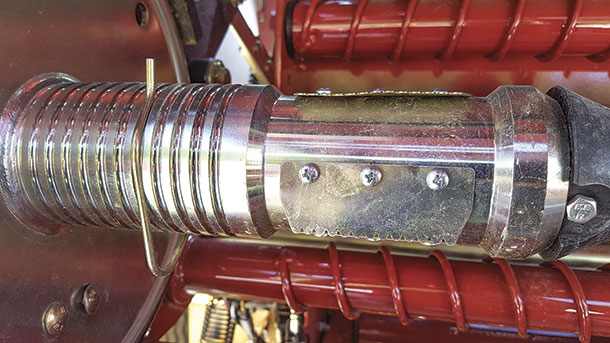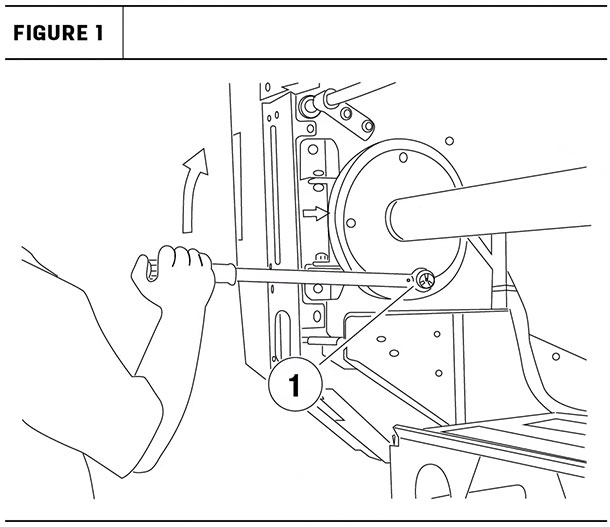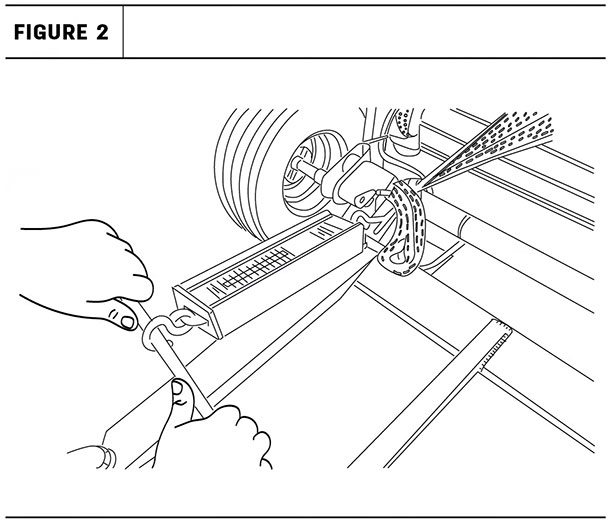If the knives are sharp, and there is tension on the net, the next place to look is the duckbill and associated linkage.
Knives
It is hard to determine if the knives are sharp when they are mounted in the baler because of the toothed plate (photo) behind the knives.

It is best to just remove the knives and sharpen them even if they feel sharp. Remove and replace one knife at a time to avoid trying to align the toothed plate when installing the knives. I like to sharpen the knives every 4,000 bales.
Net tension
To check if you have brake tension on the net roll, grab the roll and rotate it in the direction the net roll turns when wrapping. If the net roll can be turned without much or no effort, there is no brake tension being applied to the net roll. The large disc at the end of the net roll holder must rotate with the net roll when you attempt to turn the net roll. When the net is cut, the net roll should come to an immediate stop. If you observe the net roll briefly turn after the knife slams home, the tension is insufficient.
The net roll holder has a drum with a disc on the right side. On the drum are two or four toothed plates. These plates bite into the inner net tube. The brake is applied to the large disc, which is attached to the drum with the tooth plates so drag is applied to the net roll. These plates can become loose or be bent down. If the net roll spins without turning the large disc, then remove the net roll and tighten the screws in the plates and bend the plates upwards so they are perpendicular to the drum. As the net roll gets smaller, more force is required to pull the net, so many times when you have this situation it is when the net roll is small. You may also see bales not fully covered. Loose or bent toothed plates will strip the inner net tube, whether cardboard or plastic, causing all loss of net tension.
If you can pull the empty net tubes off the net roll holder without locking the drum, the plates may not be making good contact with the net inner tube.
A worn brake pad can cause a decrease of brake tension. There is an adjusting bolt attached to the brake spring, so you can adjust the tension. The BR balers are very forgiving about net tension, unless there is no tension at all. Over the years, there have been two different procedures to determine the correct tension. A quick way I tell customers, when I am called about a net tension issue, is to place an empty net tube on the net holder. Latch the net holder in place.
The counter roller will now be against the empty tube, which moves the brake pad against the disc on the end of the drum. There should now be a slight drag on the brake drum disc when you rotate the disc. This ensures there is net tension from start to finish of the net roll.
On the BR 700 Series balers, the recommendation was to install an empty net roll tube onto the net roll holder and latch the net roll holder in position (Figure 1).

Place a 5/8-inch bolt in one of the four holes in the brake drum disc. Turn the disc so the bolt is at the lowest point. Using an inch pound torque wrench, with the torque wrench pointing straight out, start to turn the disc while watching the torque required to rotate the disc. The specification was 105 to 120 inch pounds.
On the BR 7000 Series balers, the net pull test was recommended (Figure 2).

Open and latch the tailgate. Press the extend button on the operator’s panel to fully extend the duckbill. Grab the net and pull several feet out the back of the baler. Use the retract button to bring the duckbill to the precut position. Do not go to the home position because the knife will be activated. A good place to return the duckbill to is when the lower spiral spreader roll on the duckbill is parallel with the front stationary spiral spreader roll.
Tie a knot in the end of the net and insert the hook of a spring scale. Pull on the scale and see how much force is required to spin the roll of net. The specification is 85 to 95 pounds of force. The breakout reading may be higher. Try and read the scales once the net starts to move. In either case, follow the spring from the brake arm to the adjusting eyebolt. Adjust the eyebolt until you get the pressure you want to apply on the net. ![]()
Mike Seckinger has over 44 years experience as a farm equipment mechanic in southern Indiana and says, “What I write is not intended to represent the only way to solve a problem, and it may not always be complete. If you choose to follow some of my procedures, remember to always practice safety first. Wear the correct clothing and safety equipment, and use the equipment’s safety devices.”





